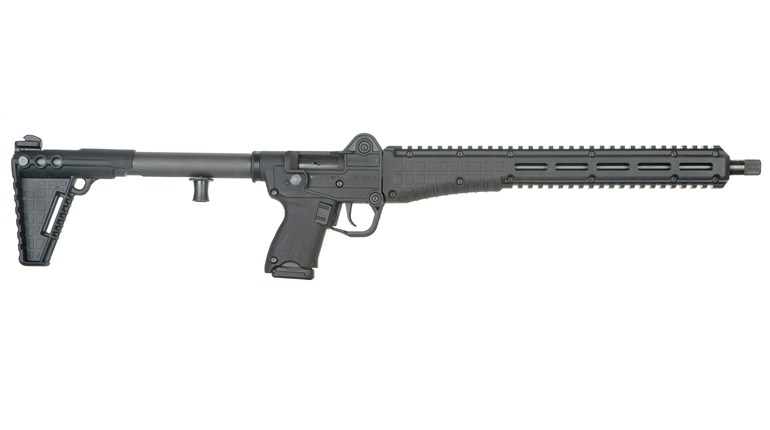
When it comes to the evolution of handguns, it seems that size and weight are perhaps the key factors. Case in point: When U.S. Army Ordnance officials began talking to Colt shortly after World War II about a new variant of its battle-proven Government Model 1911, the die was cast. The Hartford manufacturer responded to the request by the early 1950s. The latest addition to the Colt stable sported a slide that was three-quarters of an inch shorter, housed a 4.25-inch barrel and was chambered in 9 mm instead of the tried-and-true .45 ACP. As an alternative to steel, the frame was constructed from a new, lightweight aluminum alloy. Though the changes were few, the new pistol, which Colt dubbed the Commander, tipped the scales at 26 ounces, compared to 39 for a M1911A1.
One of the latest offerings by European American Armory (EAA) offers a similar truncation treatment to another deserving battle-tested sidearm: The Browning Hi Power, originally designed by John Moses Browning and Dieudonné Saive. The new Girsan MC P35 PI is a smaller version of the venerable Belgian-made fighting pistol. Though it is not the first compact Hi Power to be commercially manufactured (that honor goes to the FM Detective), as its name implies, the MC P35 PI is slightly more compact than the classic Hi Power. Its barrel measures a mere 3.88 inches, compared to the standard 4.7-inch barrel found on full-size Hi Powers.

In addition to providing improved balance to the pistol, the shorter slide and barrel are a plus for concealability. (While some may argue a shortened grip is what makes a handgun more concealable, those with large hands, like me, prefer the full-size grip while not sacrificing the pistol’s capacity for the sake of a Lilliputian grip surface.) With the right clothing, the MC P35 PI is perfectly concealable using myriad types of belt or shoulder holsters, and with 15 rounds of 9 mm on tap, that’s two more rounds than those offered by original Hi Power magazines. But the shortened barrel and slide are not the only carry-oriented features this gun offers.
A rarity in today’s polymer-framed world, the MC P35 PI is an all-steel handgun. While the added mass makes it heavier than some may consider acceptable for an EDC pistol, the added weight makes it quite comfortable to shoot, as the extra ounces helps absorb recoil. Ambidextrous thumb safeties adorn each side of the pistol’s frame, another plus for a self-defense pistol as it enables users to bring the MC P35 PI into action with either hand. Checkered composite grips keep the aesthetic of the Hi Power’s iconic wasp-waisted panels while also providing solid purchase. Further reminiscent of the pistol’s original 86-year design, the curved trigger has a smooth, rounded face and is surrounded by a generous guard that can easily accommodate a gloved finger. As with the Belgian-made service pistol, the MC P35 PI sports the classic Commander- or rowel-style hammer and is surprisingly paired with an abbreviated frame tang. While such features are true to the original Hi Power, those same graceful, eye-pleasing lines of such classic elements led to the Hi Power earning the reputation as a notorious devourer of the flesh on the web of the shooter’s hand. Would the MC P 35 PI suffer from the same stigma? Time would tell.
Up top, on the slide, Hi Power aficionados will be pleased to see subtle rear serrations that offer plenty of purchase, without being too aggressive. The traditional external extractor spans a few inches and flows into the classic contours of the pistol’s tiny, egg-shaped ejection port.
In terms of my experience with the MC P35 PI on the firing line, I tested its accuracy at 15 yards. It handled quite well, (no hammer bite) and functioned flawlessly with a wide range of bullet weights. Its accuracy proved more than adequate at self-defense distances, and it displayed a penchant for lightweight bullets, printing slightly larger than 1.25-inch groups with Federal 115-grain ammunition. 
Some could argue a handgun with a magazine disconnect has no place on a handgun designed for concealed carry. It also prevents the magazine from dropping freely and is a contributing factor to an overly heavily trigger pull, though such factors are hardly deal-breakers. When it comes to a carry gun, I’m a bit of a Hi Power snob and would have some custom work done to any out-of-the-box Hi Power—regardless of the manufacturer. This makes the more economic MC P35 PI quite appealing. If you want a pistol that best replicates Hi Power, this more compact variant is ideal.
Fans of the recent Hi Power resurgence have even more to be thankful for. So do I, the Hi Power collection in the Boyd Bunker is about to become a little bigger.




































